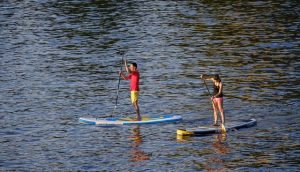Inflatable Paddle Boards (IPBs) are a popular choice for water enthusiasts due to their portability and versatility. Crafted from lightweight PVC or plastic, IPBs can be easily transported and inflated for various activities. With customizable stiffness and shapes, they cater to beginners and experts alike, offering enhanced comfort features like integrated seats. Their durable construction ensures longevity in diverse water conditions. The rise in demand for portable outdoor gear has led to innovative designs, making IPBs easier to pack and store while maintaining their robust nature. These boards facilitate spontaneous adventures, appealing to travelers, campers, and those with limited storage. Proper maintenance, including regular cleaning and storage, is crucial for prolonging their lifespan.
Lightweight inflatable paddle boards are transforming the way we enjoy water sports, offering unparalleled portability and accessibility. This comprehensive guide explores the full spectrum of lightweight paddling, from understanding the basics of these versatile boards to delving into the materials, design innovations, and real-world applications that make them a popular choice. We’ll also cover maintenance tips to ensure your board lasts for years to come, empowering you to fully embrace the inflatable paddle board revolution.
Understanding Inflatable Paddle Boards: A Comprehensive Overview

Inflatable paddle boards (IPBs) have gained immense popularity for their exceptional portability and convenience, making them a top choice among water enthusiasts. These boards are designed to be lightweight yet sturdy, allowing users to easily transport them to various water bodies for recreational activities like paddling, surfing, or yoga. The core component of an IPB is typically made from durable PVC or plastic materials that can be inflated with an electric pump or even a simple hand pump.
IPBs offer a versatile experience on the water, catering to both beginners and advanced paddlers. Their design enables users to adjust the stiffness and shape for different purposes. Some models come with integrated seats and handles, enhancing comfort during extended use. Additionally, their seamless construction ensures they can withstand various water conditions, from calm lakes to choppy seas, making them a reliable option for outdoor adventures.
The Key to Portability: Weighing the Benefits of Light Construction

The key to achieving true portability in outdoor gear lies in its weight—a factor that holds significant importance, especially for items designed for recreational use like inflatable paddle boards. In today’s active lifestyle market, consumers increasingly seek products that are not only versatile but also easy to transport and store. This is where lightweight construction plays a pivotal role.
Inflatable paddle boards, for instance, have revolutionized water sports by offering a convenient alternative to traditional, heavier boards. By utilizing advanced materials and innovative design techniques, these boards can now be easily deflated, rolled up, and packed into compact sizes, making them ideal for travel and outdoor adventures. This portability allows users to access waterways and lakes far from home, fostering a sense of exploration and accessibility that was previously limited by the bulkiness of conventional equipment.
Materials That Make a Difference: Choosing the Right Components
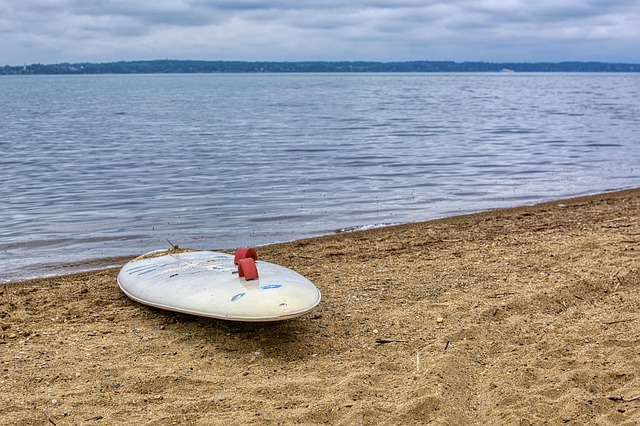
When it comes to designing an inflatable paddle board (IPB), the materials used play a pivotal role in achieving portability without compromising durability. The key lies in selecting lightweight yet robust components that can withstand the rigors of outdoor adventures. Modern advancements in materials science have led to innovative choices, such as high-quality PVC and drop-stitch fabrics, which are lighter than traditional materials while maintaining exceptional strength.
These advanced materials ensure an IPB can be easily transported, packed, and stored, making it ideal for travelers, campers, and outdoor enthusiasts who value convenience and mobility. By carefully choosing these components, manufacturers can create boards that offer a superior user experience without adding unnecessary weight, allowing individuals to explore rivers, lakes, or oceans with ease.
Design Innovations for Easy Transportation and Storage
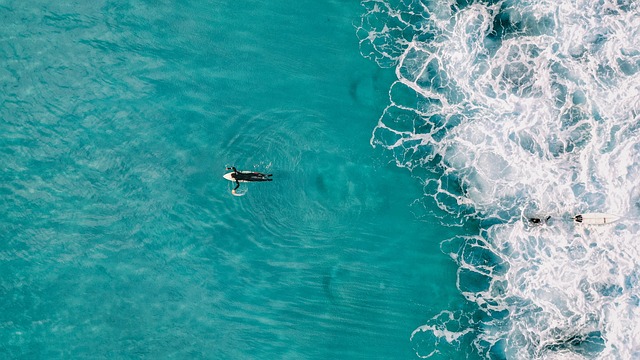
Inflatable paddle boards have revolutionized water sports with their innovative design focused on portability and ease of storage. These boards are a game-changer for outdoor enthusiasts who crave versatility, as they can be easily deflated and packed down to a fraction of their original size. This compactness allows for convenient transportation, whether it’s being carried in a backpack or stored in the trunk of a car, making them accessible for spontaneous adventures.
The lightweight yet robust construction of inflatable paddle boards is a result of advanced materials and manufacturing techniques. High-quality plastics and fibers ensure durability while keeping the overall weight minimal. This design innovation allows users to easily move their boards from the car to the water’s edge, eliminating the need for bulky carrying equipment. Moreover, many models come with convenient carry straps and compression bags, further simplifying the transportation process.
Real-World Applications: Where Lightweight Paddle Boards Excel
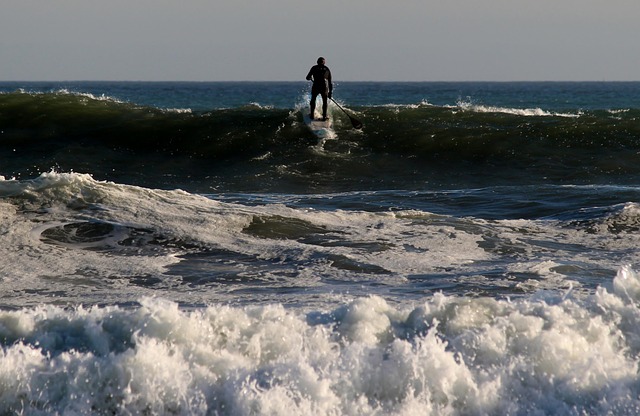
Inflatable paddle boards (IPBs) shine in real-world applications where portability and ease of storage are paramount. Their lightweight design makes them a favorite among outdoor enthusiasts, allowing for effortless transport to lakes, rivers, or coastal areas. Whether it’s a spontaneous camping trip or a quick jaunt to the nearby lake, IPBs can be easily packed into a car trunk or even carried as oversized luggage without breaking a sweat.
This portability doesn’t just benefit travelers; it also appeals to those who enjoy water sports but live in apartments or have limited garage space. The versatility of IPBs is further enhanced by their ability to quickly transform from stowed away to ready for action, making them an ideal choice for impromptu paddling sessions or peaceful solo floats on serene bodies of water.
Maintenance and Care: Ensuring Your Inflatable Board Lasts
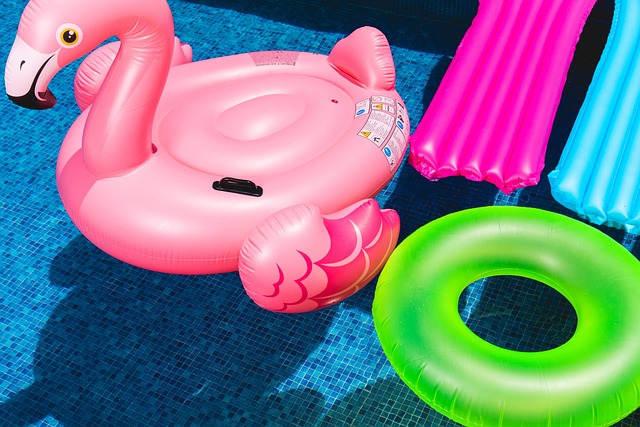
Proper maintenance and care are key factors in ensuring your inflatable paddle board (IPS) lasts for years to come. Start by regularly cleaning your IPS with fresh water after each use, eliminating any salt residue or dirt that could damage the material. Avoid using harsh detergents or soaps, as they may strip away the protective coatings. A soft brush can help remove stubborn marks without causing wear and tear.
Additionally, it’s crucial to store your IPS properly when not in use. Keep it in a cool, dry place, away from direct sunlight and extreme temperatures. Deflate the board completely before storing and consider using a waterproof storage bag to protect against dust and moisture. Regular inspection is also vital; check for any signs of wear, tears, or punctures, addressing them promptly to prevent further damage.
